Custom Software Development
Custom Banking Solutions: Revolutionizing Customer Experience in Finances
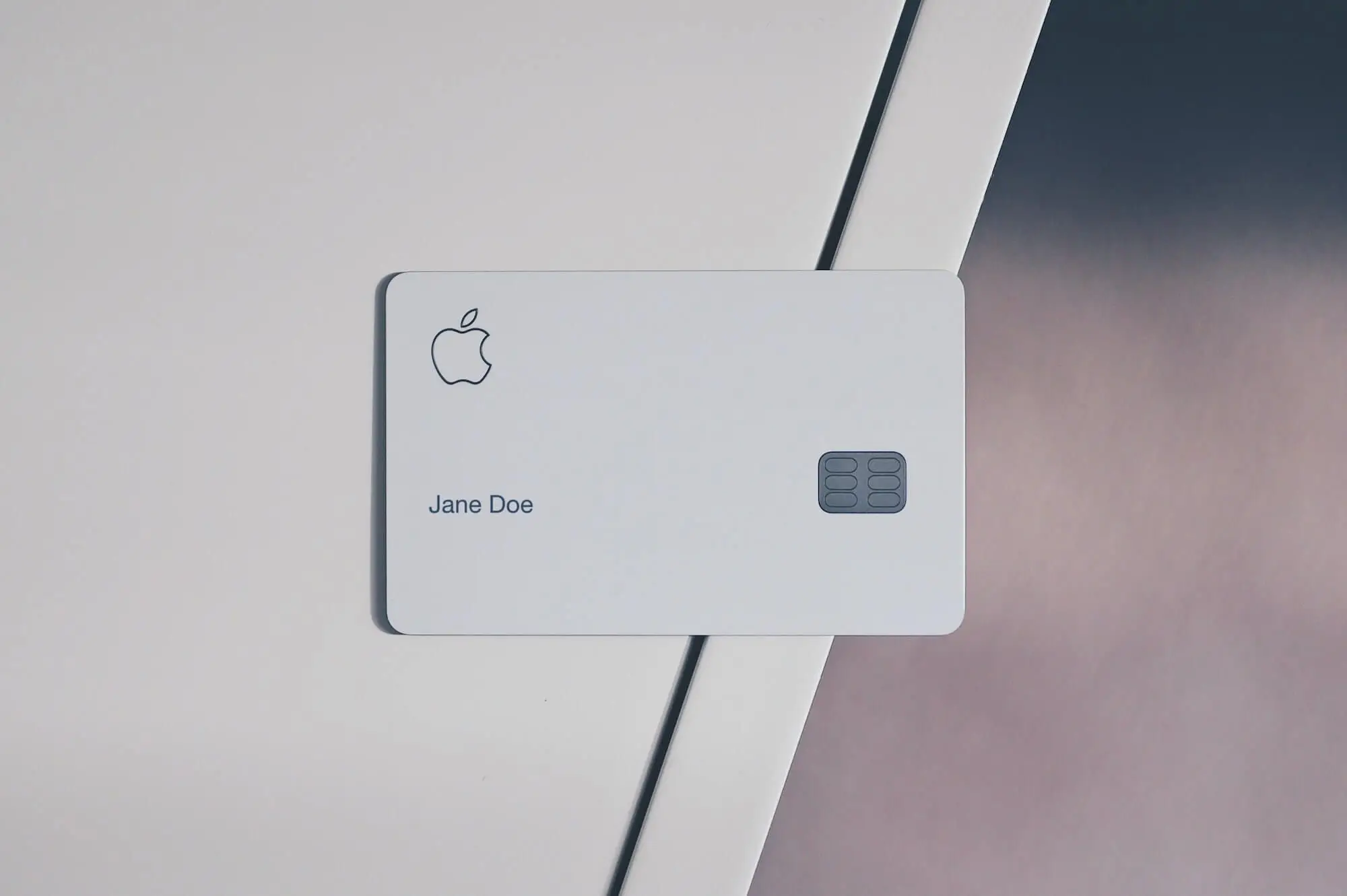
Customers are the lifeblood of any business. However, in this digital age, banking customers are becoming increasingly demanding and impatient with their financial needs. The pressure is on banks to provide innovative banking solutions that not only meet customers’ expectations but also exceed them.
According to a survey conducted by Accenture, the majority of customers want their banks to provide them with digital solutions that are intuitive and easy to use. In addition, they expect their financial services provider to offer personalized experiences that take into account their individual needs and preferences.
So a smooth banking experience starts with custom banking solutions. The demand for customized banking solutions is growing, and this trend will only continue to grow in the future. Customers want to be able to access their money, manage their finances and make payments whenever they need to.
This means that banks need to adapt their services accordingly by providing customers with fast, secure, and seamless digital experiences. In this deep dive, we'll uncover how different technologies enhance the banking experience in practice and what custom banking solutions help achieve better banking personalization.
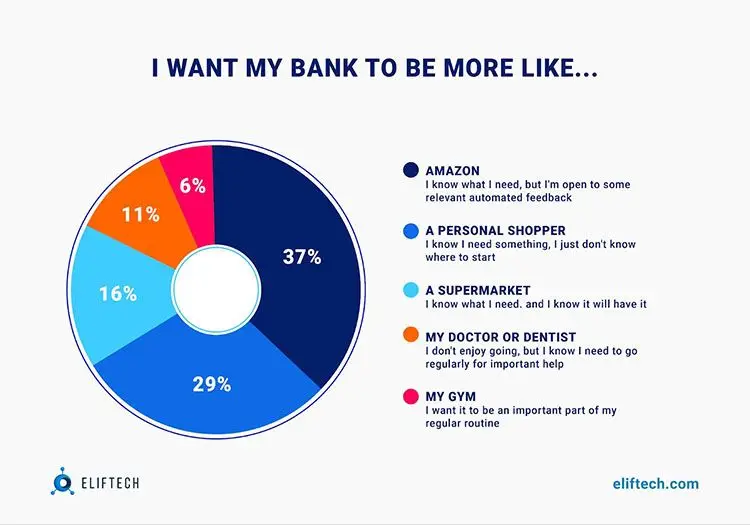
How Can Banks Benefit From Custom Banking Solutions?
When it comes to customer experience, banks are lagging behind compared to other industries. This is especially true when it comes to mobile banking solutions and digital customer engagement. This is because banks have been slow in adapting their digital platforms while customers expect more than ever before.
With the rise of FinTech and mobile banking apps, banks are having a hard time keeping up with customer expectations. Researchers at KPMG found that successful banks already invest in custom banking solutions as a way to improve their services with cutting-edge technology. According to the study, top companies are planning new digital strategies and developing digital platforms and ecosystems (mobile apps and websites) to provide better service.
Read more: Exploring How Personalized Banking Is Changing the Industry: A $20 Trillion Breakup Opportunity
Banks need to focus on two key areas if they want to remain relevant for their customers. First, banks need to make sure that they have a great mobile app experience. This will help them reach more customers and provide them with a better way of managing their finances. Second, banks should consider adding personalized banking features in order to enhance the user experience.
Banks have to find a way to engage with customers who are looking for a more personalized experience. FinTech startups have taken advantage of this opportunity by building apps that not only provide better services but also make it easier for customers to manage their finances.
So how can banks create user experiences that are simple and enjoyable? It is achieved by integrating modern custom banking solutions.
Customers are more likely to use and enjoy a service if they find it easy to use. This is why banks should focus on creating simple user experiences that are intuitive and enjoyable. The key to this is providing customers with the right tools and features so they can easily manage their finances without any hassle.
Custom banking solutions are designed to meet the needs of today’s customers. They provide a seamless experience that is intuitive and easy to use while also providing all the features that customers need in order to manage their finances.
How to Achieve Banking Personalization with Right Software?
With an overwhelming amount of everyday push notifications, users are becoming more "banner blind" to general mobile banking alerts. In attempts to fight for users’ attention, more banks use hyper-personalization software to cover individual customer needs.
Big data technology enables banks to collect and analyze vast amounts of customer information. It allows banks to create personalized offers that increase the probability of obtaining customer interest by 30%.
Let’s see how custom banking solutions can level up service personalization:
Internet of Things
By 2030, we’ll be living in a hyper-connected world. Consumers will interact with service providers using voice and personal assistants, facial recognition systems, and wearable devices. Almost every device will be connected to some form of artificial intelligence (AI). It can be a refrigerator that monitors and notifies you to order missing supplies to your front door, checking who delivers packages to your home.
In addition, the technology of paying with a plastic card at a POS terminal or mobile payments will be replaced by protected voice commands or facial expressions.
Read more: Leveraging an IoT Monitoring System for Your Company
Cybersecurity Driven by AI
By 2030, cybersecurity will rely on predictive analytics and threat recognition, with AI at the center of the system. AI will make real-time adjustments to security measures, preventing hackers from exploiting vulnerabilities.
Ultimately, people will stop using tokens, mobile phones, or smartwatches to store digital personal and biometric data. Instead, we may use personal items such as interactive glasses, rings, earrings, or cufflinks.
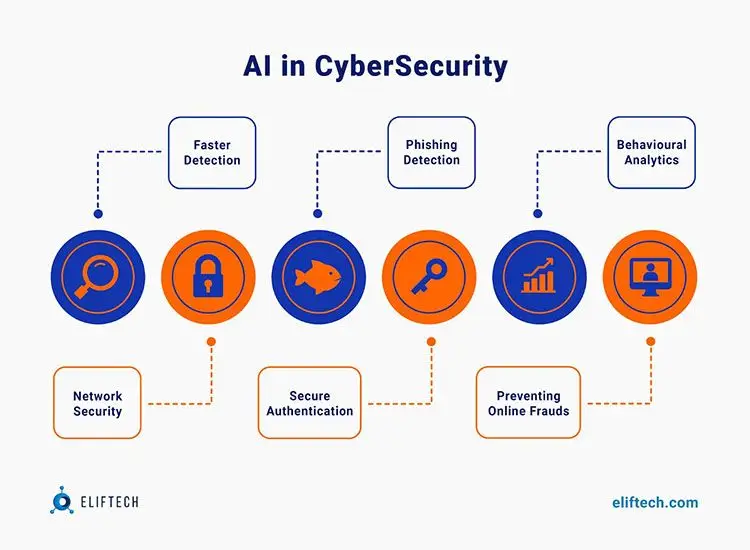
"Superapps"
Today is the era of "deep" fakes, advanced cybercrime, data theft, blackmail, and phishing. In the future, more consumers will value a platform they can trust and feel safe in.
A "super-app" combines digital proximity, privacy, and personalized services. It will keep customers engaged and loyal to a brand. One example of such an application is Chinese WeChat.
Biometric Security
Biometric technologies like facial recognition, voice analysis, and fingerprint scanners are commonly used. Biometrics facilitate account access, authenticate online transactions, and even replace passwords. New banking software systems will have palm vein pattern recognition, iris recognition, and retinal scanning instead of passwords and PINs, which are often insecure.
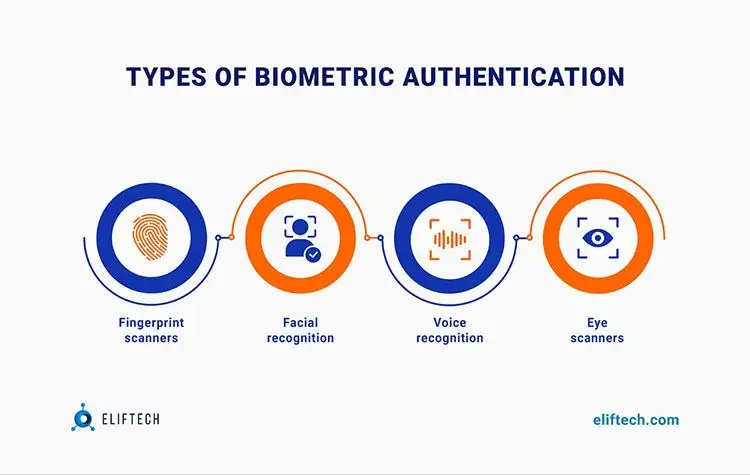
RegTech (Regulatory Technologies)
RegTech is a term to describe the use of technology in monitoring regulatory compliance for automating data monitoring and reporting. This helps financial institutions keep up with changing regulations and manage large volumes of data. RegTech comes in handy as political governments change and authorities increasingly seek to push for tougher cybersecurity laws.
The RegTech market of custom banking solutions is foretold to reach $57.5 billion by 2032.
RPA: Robotic Process Automation
Robotic Process Automation (RPA) automates repetitive tasks such as data entry and processing using digital robots. Unlike artificial intelligence, RPA does not need human-like cognitive capabilities.
PRA frees up resources and improves accuracy, allowing businesses to focus on more innovative and profitable activities. It can reduce operational costs for FinTech businesses without compromising quality and productivity.
Although Big Data is already practiced by many companies of all sizes, banking personalization remains a rather complex direction with great prospects.
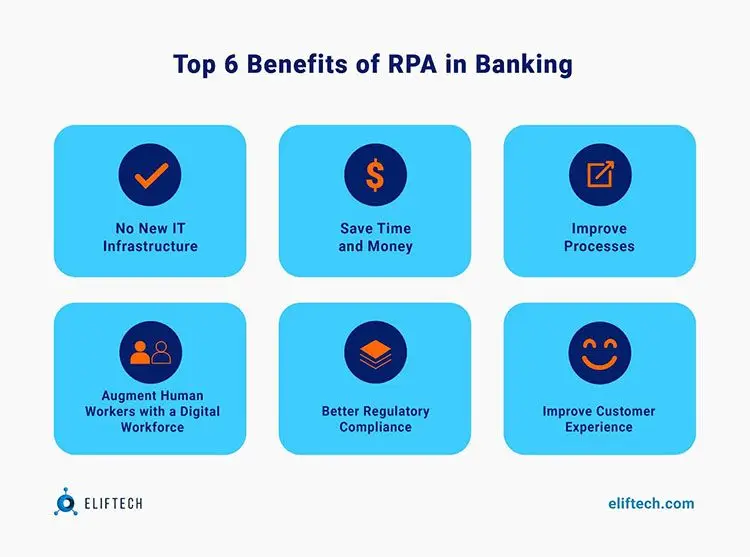
Technologies Used for Personalized Banking
Banking is undergoing a digital transformation, one that will change the way customers interact with their banks. The rise of AI, machine learning, and IoT has made it possible for banks to provide more personalized services. So banks can now provide solutions that are more accurate, faster, and cheaper than ever before.
Here’s a look at how these technologies can help banks gain a competitive edge:
Artificial Intelligence
In 2030, the goal of AI algorithms and data models will be to optimize customers' financial decisions. They often drive positive behavior in people, "nudging" them into certain actions with a positive financial outcome.
For example, AI can help vulnerable customers avoid bad financial decisions by nudging them toward positive outcomes. It can also personalize financial services for people with low financial literacy.
Custom banking solutions based on AI are best for pattern recognition. For example, it allows tracking of clients’ financial status by collecting data about their accounts, loans, and investments. Based on this data, banks choose the most relevant services to offer to a particular customer.
Artificial intelligence helps in many areas of FinTech, such as
- Risk management,
- Fraud prevention,
- Personalizing banking,
- Reducing operational costs through optimization,
- And automating internal workflow
- Optimizing workflow for customers.
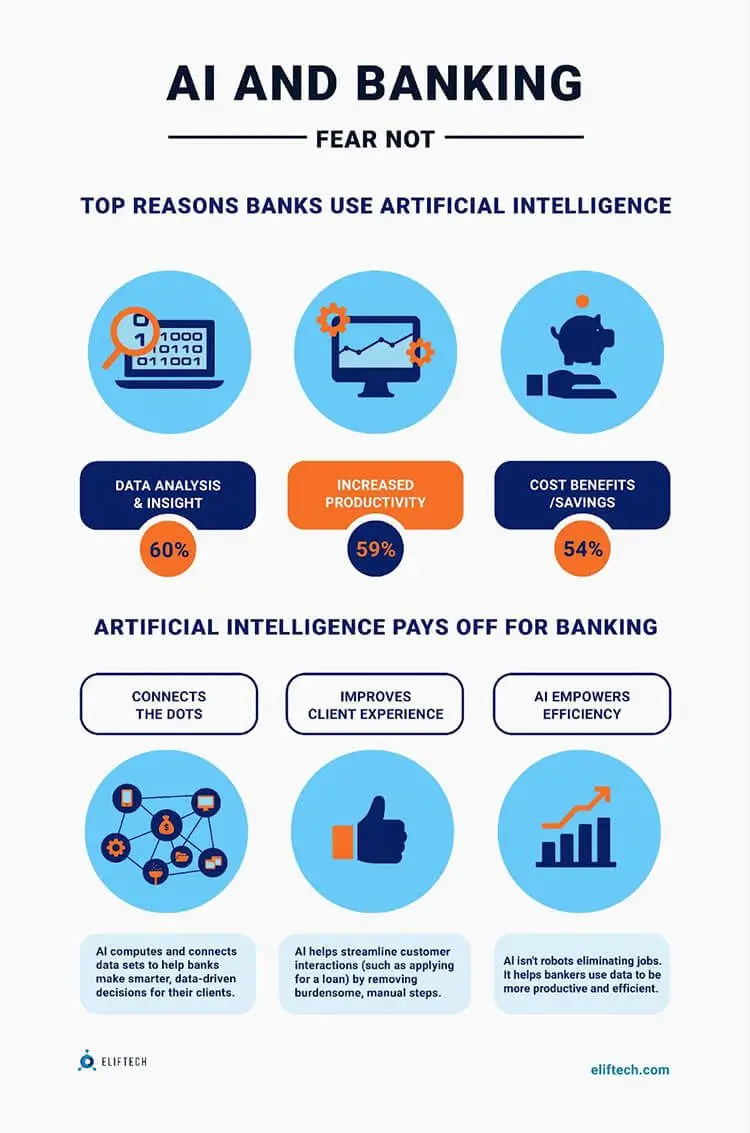
One notable development of AI is robotic advisors. These online platforms can self-manage investments and offer a personalized portfolio of services. Robotic advisors use "big data" trends to determine the optimal investment strategy.
A great example is Alpaca Forecast AI Prediction Matrix - a price prediction solution by Bloomberg. It processes millions of transaction records, captures demand movements, identifies patterns, and predicts future price movements.
Another example is the private AI cloud by the Royal Bank of Canada (RBC). It can analyze millions of data points, accelerate the analysis of financial forecasts and enable companies to build and deploy AI-powered apps.
The other common AI tools in banking are chatbot banks or something like IBM Watson for financial analysis. They can learn from customer conversations and tailor future interactions. Bots use historical data and real-time inputs to learn and foresee future customer behavior.
Retail banking demonstrates the most progress in custom banking solutions with IoT. Citibank and its beacon-based solution for unlocking ATM entrances with smartphones after hours is a great example of such innovation.
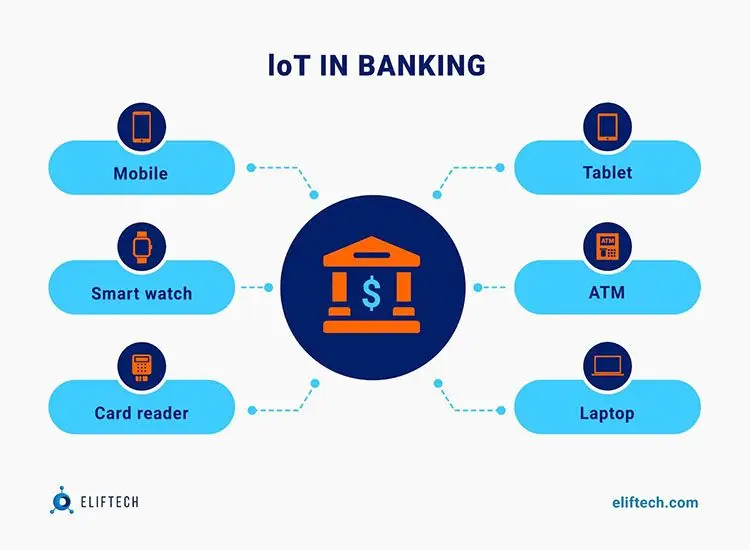
Machine Learning
Machine learning is a subcategory of AI focused on solving complex problems based on learned data. ML is widely used for:
- Fraud Prevention — ML tools analyze existing fraud cases, identify common patterns, and assess whether a specific business is exhibiting similar behavior. They can predict possible frauds and identify dubious financial institutions.
- Risk management — the software analyzes the company's activities and detects potentially threatening patterns.
- Fund Development Prediction — the ML-based tool can identify the most likely future developments by scanning investment records.
- Customer care — the platform analyzes customer data and creates a "smart" customer profile.
- The Internet of Things (IoT) — they speed up financial processes, both internal (management and team organization) and external (customer management and communication). For example, connecting smartphones to financial databases using the IoT network and sending data directly from one device to another is possible.
Big Data
How are Big Data and Machine Learning connected? To build machine learning models, you need large data volumes. Big Data is a designation for data characterized by the 5 V’s:
- Volume
- Variety
- Veracity
- Value
- Velocity
Banks use Big Data to build machine learning models that demand large data volumes. However, working with Big Data requires new hardware, experts to deploy it, and data scientists to process the data. An example of Big Data could be phone calls in audio format, which contain useful data but are difficult to extract meaningful information from.
APIs
Application Programming Interfaces (APIs) allow bank customers to securely share their account information with third-party providers. This helps drive innovation in digital banking and accelerate the development of new financial apps and personalized services.
Open Banking allows banks to partner with FinTech companies and other banks instead of competing with them. Meanwhile, customers benefit from more control over their transactional data. This benefits both the customer experience and financial institutions, which can offer personalized services and participate in a revenue-sharing ecosystem.
Read more: Open Banking App Ideas: Use Cases for Fintech Founders
According to “The Insider, the revenue potential in the UK alone is predicted to reach $2 billion by 2024.
Eliftech Expertise: ClassWallet Case
ElifTech’s FinTech case is a project called ClassWallet, a financial and payment system designed to streamline and simplify the management of school-related expenses. The system allows teachers and administrators to easily request and approve funds for classroom expenses such as field trips and supplies and provides parents with a convenient way to pay for these expenses online. The system also eliminates paperwork and manual processes, reduces transaction costs, and enables the monitoring of transactions in real time.
Read more: ClassWallet–Feature-Rich Financial & Payment System
The development of ClassWallet required strict adherence to various regulations and the need for robust security measures to protect sensitive financial information. Eliftech's team was able to meet these requirements by utilizing advanced technology and design practices, resulting in a system that is both secure and user-friendly.
A payment system that was built using Node.js technology and includes different types of wallets such as TeacherWallet, FamilyWallet, MaintenanceWallet, and SchoolWallet. The system was built using React.js for the front-end and includes prepaid card functionality and various levels of reporting.
Eliftech also developed a mobile application using React Native for the reimbursement feature, which allows users to scan paper checks for expenditures and receive payments. Additionally, Eliftech's team implemented a chatbot to reduce the overload on customer support and is working on making it even more advanced.
Eliftech helped to design and implement the system, which resulted in increased efficiency and reduced costs for schools and parents. The system also met the need for tight security and compliance with various regulations.
So if you’re looking to enhance your banking or financial mobile app, our team of experts is here to help. We specialize in developing custom solutions tailored to your business needs, ensuring a great user experience with personalized features. Contact us today to learn more.
The Future of Custom Banking Solutions
Technology advancements are changing the way banks operate. Over the next decade, we’ll see more changes in the banking industry than over the past 100 years. Those who are going to build custom banking solutions of the future will focus on improving customers' financial well-being.
To achieve this goal, banks will rely on four aspects:
- Data. Consumers generate increasing amounts of data. Data volumes will grow exponentially as disparate data sets merge to provide a complete 360-degree story about our lives.
- Business models. Easy-to-access consumer data will lead to new participants in custom banking solutions, such as non-banks and upstream banking platforms. At the same time, leading banks will continue expanding their business models.
- Regulation. These significant changes will require governments and regulators to develop new ways of identifying and managing risk.
- Technology. Banking will become more personalized and ubiquitous across devices and apps. Innovations will change the communication channels of banks with clients, as well as its range of services and the role of banks in everyday life.
The banking industry of 2030 will look completely different. Banks will adapt more flexibly to customers' needs while employing more advanced custom banking solutions. For example, consumers who need more time, knowledge, and skills will choose an autonomous banking experience. They will hand over more authority to the bank in personal finance management.
On top of that, banks must go beyond "money" and integrate with the wider ecosystem of alternative services. The bank of the future will be able to redefine and monetize trust, using its heritage and experience. This will gain a significant advantage over new competitors. Customers will only entrust banks to perform automated decisions on their behalf if they are consistent and transparent.
Are you ready to become “a bank of the future” today? Contact our team for custom banking software development services that will reach you in the future.
